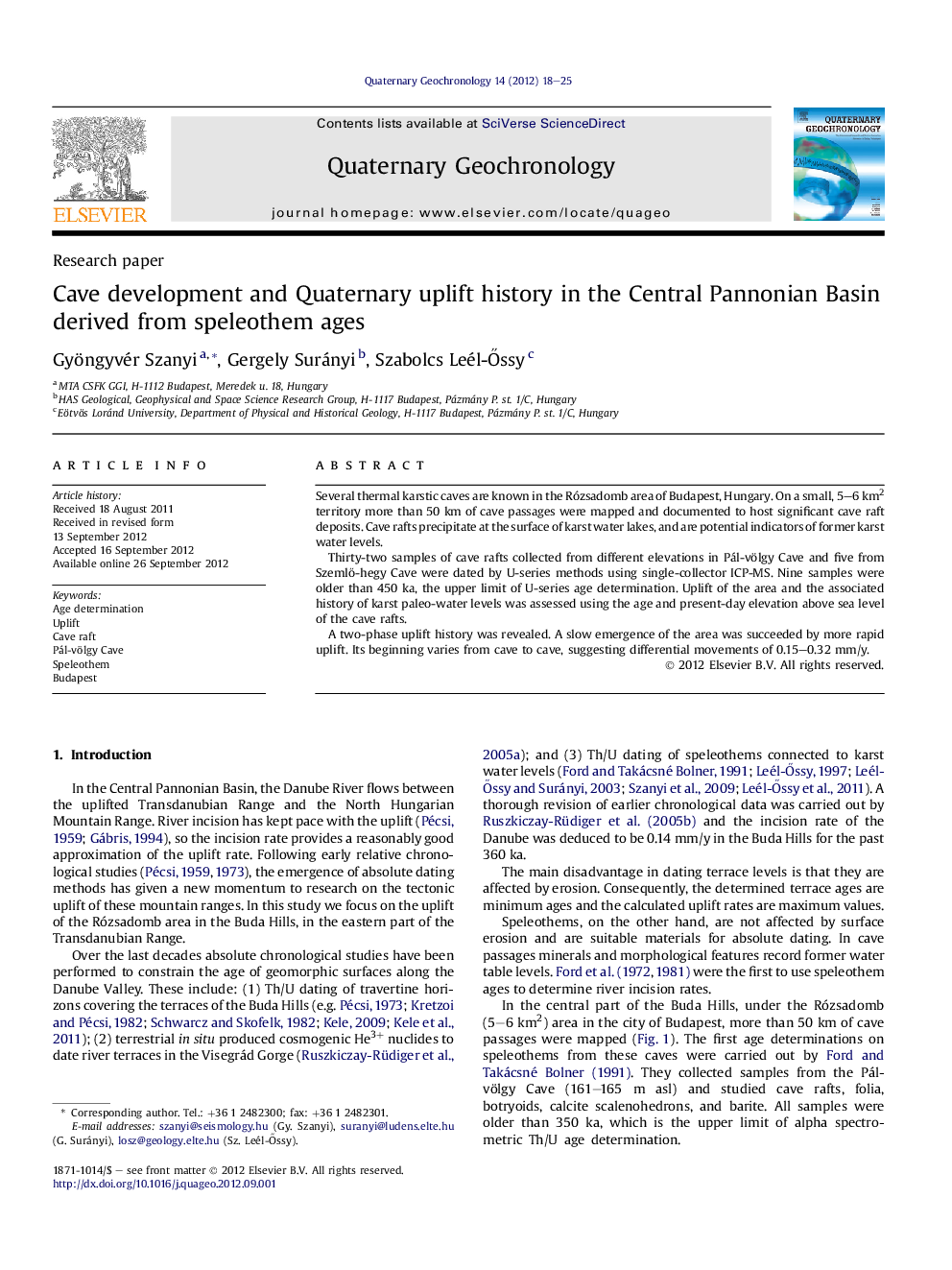| Article ID | Journal | Published Year | Pages | File Type |
|---|---|---|---|---|
| 4725080 | Quaternary Geochronology | 2012 | 8 Pages |
Several thermal karstic caves are known in the Rózsadomb area of Budapest, Hungary. On a small, 5–6 km2 territory more than 50 km of cave passages were mapped and documented to host significant cave raft deposits. Cave rafts precipitate at the surface of karst water lakes, and are potential indicators of former karst water levels.Thirty-two samples of cave rafts collected from different elevations in Pál-völgy Cave and five from Szemlő-hegy Cave were dated by U-series methods using single-collector ICP-MS. Nine samples were older than 450 ka, the upper limit of U-series age determination. Uplift of the area and the associated history of karst paleo-water levels was assessed using the age and present-day elevation above sea level of the cave rafts.A two-phase uplift history was revealed. A slow emergence of the area was succeeded by more rapid uplift. Its beginning varies from cave to cave, suggesting differential movements of 0.15–0.32 mm/y.
► 37 speleothem samples from the thermal karstic caves of Budapest (Hungary) were dated. ► Karst water lowering history was assessed for the past 450 ka. ► A two phase uplift history and differential uplift of the caves of the Rózsadomb area of Budapest was revealed. ► The estimated average uplift rate is different from cave to cave, its value varies between 0.15 and 0.32 mm/y.
